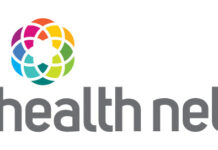The U.S. Food and Drug Administration: Partnering For a Safe Food Supply
SILVER SPRING, Md., April 7, 2015 /PRNewswire-HISPANIC PR WIRE/ — The World Health Organization (WHO) has declared April 7 as World Health Day, and this year’s theme is Food Safety. Food safety is a worldwide issue. Here in the United States, our food supply becomes more global every year. Currently, 15 percent of our food is imported from other countries – but this includes 80 percent of our seafood, nearly 50 percent of our fresh fruit, and 20 percent of our fresh vegetables.

Photo – http://photos.prnewswire.com/prnh/20150403/196490-INFO
Logo – http://photos.prnewswire.com/prnh/20090824/FDALOGO
All over the world, growers, manufacturers, transporters, retailers, food service workers, and consumers share a responsibility to reduce food safety risks. To keep foods safe from both familiar and emerging threats, the U.S. Food and Drug Administration (FDA) grows more dependent every year on collaboration and partnerships across national boundaries and here at home.
Global Partnerships
The 2011 Food Safety Modernization Act (FSMA) requires FDA to prevent foodborne illnesses in partnership with the global food safety community. So today, FDA is increasing worldwide collaboration to leverage the food safety work of WHO, the Food and Agricultural Organization of the United Nations, and the World Trade Organization. FDA works closely with major trading partners and is enhancing public-private partnerships through such education initiatives as World Bank’s Global Food Safety Partnership, Food Safety Preventive Controls Alliance, Produce Safety Alliance, and Sprouts Safety Alliance.
FDA is working directly with specific nations, too. One initiative with Mexico is in place to build an operational partnership on food safety. FDA also is pursuing agreements with countries whose food safety systems are comparable to ours, including Canada and Australia. One is already in place with New Zealand. FDA has also increased foreign inspections and has offices in China, India, Europe, and Latin America.
FDA at Home
Here in the United States, FDA has wide-reaching impact on food safety efforts. FDA personnel can be found all across the county; currently, the agency employs 1,600 investigators and inspectors, covers approximately 95,000 FDA-regulated businesses, and has offices in 157 U.S. cities. FDA physically examines approximately 1 percent of all imported shipments (roughly 10.7 million import lines annually in FY 2014); 30,000 import shipments a year are detained due to goods that appear to be unacceptable. All told, FDA ensures the safety of a trillion dollars’ worth of products in the United States every year.
Consumers Are Key Partners
FDA reminds consumers that they play the most critical role in the partnership effort to keep food safe from farm to table by carefully following the Four Key Steps to Food Safety:
- CLEAN: Wash hands and surfaces often. Bacteria can be spread throughout the kitchen and get onto hands, cutting boards, utensils, counter tops, and food.
- SEPARATE: Cross-contamination can happen when handling raw meat, poultry, seafood, and eggs. Keep these foods—and their juices—away from ready-to-eat foods.
- COOK to the right temperatures. Food is safely cooked when it reaches a high enough internal temperature to kill the harmful bacteria that cause illness.
- CHILL foods promptly to slow the growth of harmful bacteria. Use an appliance thermometer and keep the refrigerator at 40 degrees Fahrenheit or below and the freezer at 0 degrees Fahrenheit or below.
WHO has its own version called “Five Keys to Food Safety” in which it adds the advice to use safe water.
For consumer Information on Safe Food Handling practices:
- http://www.fda.gov/Food/FoodborneIllnessContaminants/BuyStoreServeSafeFood/ucm255180.htm
- http://www.who.int/foodsafety/areas_work/food-hygiene/5keys/en/
Learn more about FDA’s efforts to strengthen the U.S.’s food safety foundation: http://www.fda.gov/fsma
Contact: Media: 1-301-796-4540 Consumers: 1-888-SAFEFOOD (toll free)
NOTE TO EDITORS: A high-resolution image is available at: http://hispanicprwire.com/en/multimedia/






